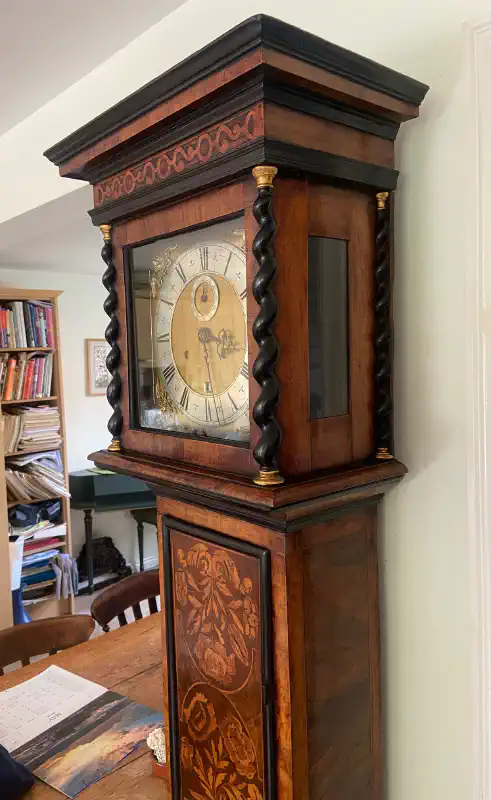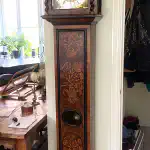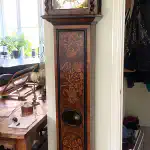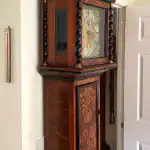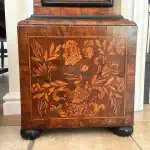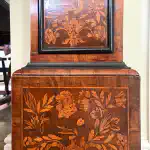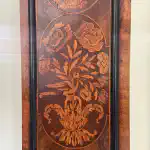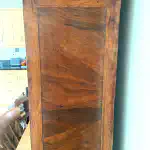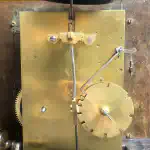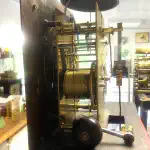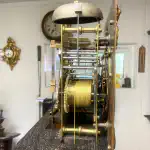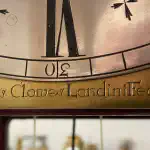Early English longcase clock by James Clowes, c.1680
- Height:
- 198.5cm
- Maker:
- James Clowes Londini Fecit
- Price:
- on request
An Exceptional Longcase Clock by James Clowes, c. 1680
This longcase clock has a marquetry walnut-veneered oak case with rising hood, flanked by ebonised barley twist columns with gilt wooden bases and capitals, ebonised mouldings and blind fret, typical of the period. There are viewing windows to the sides. The trunk door has ebonised D-mouldings and fine panel marquetry, depicting floral, leaf and vine motifs and a bird in the middle. The oval lenticle is set in an ebonised surround. The case rests on bun feet.
The 10-inch dial has a matted centre around which there is a silvered chapter ring with Roman hour, half hour, quarter-hour, Arabic five-minute and minute divisions in a narrow track. The corners are embellished by winged cherub-head spandrels. Below the XII is a seconds ring whilst above the VI there is a date aperture. The time is indicated by a fine pair of pierced blued steel period hands. The dial is signed by the maker along the bottom edge of the dial in the following manner: Iames Clowes Londin Fecit.
The eight-day weight-driven movement has going and striking trains. The going train has an anchor escapement with seconds pendulum (there are remnants of gilding on the bob). The striking is regulated by an external count wheel and indicates the hours on a bell. In addition, it has bolt-and-shutter maintaining power, which is probably original. It is operated by a cord and keeps the movement going while it is being wound.
The clock is in excellent condition.
The maker
James Clowes (c.1643-1705), who was born in Astbury, Cheshire, became a freeman of the Clockmaker’s Company in 1671 – the same year as Thomas Tompion, Joseph Knibb, Daniel Quare and Joseph Windmills. He was working in St Giles in the Fields in 1673, not much earlier than when he probably made this clock, later at Saint Ann’s Blackfriars. He married twice, first in 1675 and the second time in 1680. He died c. 1705. There are longcase, bracket and lantern clocks by his hand known. His younger brother by 8 years, John Clowes, is another notable clockmaker.
Interested in this clock?
Send an email or leave a message and find out if it is still available!
